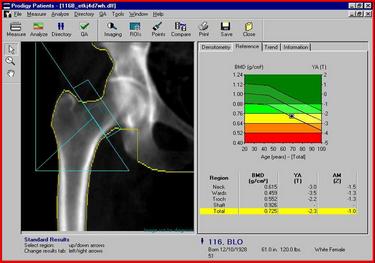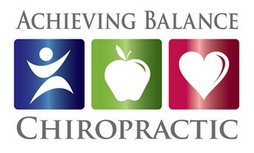 When it comes to osteoporosis, do you know the score? If you or a loved one is over 45, then you should know what a “DEXA” is, and how to read one.
When it comes to osteoporosis, do you know the score? If you or a loved one is over 45, then you should know what a “DEXA” is, and how to read one.
It’s important to understand that most people who have osteoporosis won’t ever know it before fracturing a bone. Not even an x-ray done at your doctor’s office is helpful, since a person would need to lose 30-50% of their bone density before it could be detected with a normal x-ray.
The test that is used to check your bone density, and determine if you are at risk for fracture, is called a DEXA. It stands for Dual Energy X-ray Absortiomety. The test will produce two scores that are used to determine your risk.
DEXA scores can be confusing, but they don’t have to be. If you do an internet search asking how to interpret them you’ll end up reading about complicated mathematical formulas, conversions and units of density. In this post I am going to break it down very simply, and no math knowledge is needed. More importantly, I will explain what the sores actually mean, and why you should care.
The test will give you 2 scores. They are called the “T-Score” and the “Z-Score”. Both scores are important, but for completely different reasons.
The T-Score:
The T-score compares your bone density to the average density of a 30 year old person of the same sex. The score will be a positive number, or a negative number. A positive numbers means your density is greater than the average 30 year old (good). A negative score means your bone density is less than the average 30 year old (bad). A score with a negative number less than -1 but greater than -2.5 means you have osteopenia, which is a level of bone density lower than normal, but not low enough to be classified as osteoporosis. A score of -2.5 or lower is classified as Osteoporosis. In other words, this test answers the question: Do you have osteoporosis, yes or no.
What you probably don’t realize is that this information (do you have osteoporosis, yes or no) isn’t enough information for your doctor to make a clinical decision. For many people osteoporosis is a natural part of aging, so more information is needed before making any treatment decisions. Specifically, is it something that needs to be investigated further? Is there some sinister cause for this osteoporosis, or is it “normal?” This is where the Z-Score comes in.
The Z-Score:
The Z-Score compares your bone density to the average density of someone your same age and sex. It compares you to your peers. You see, there are things other than aging that cause osteoporosis. Very serious conditions such as certain types of cancer, alcoholism, hemolytic anemia, hyperthyroidism, etc., can cause a decrease in bone density that could be confused with the normal aging process. By comparing you to your peers it can be determined that your lack of bone density is average, which means it is probably due to aging, or it is more than average, which means it may be a symptom of some other condition or disease.
This is why there are 2 scores. This way your doctor can say:
“Yes, you have a significant reduction in bone density (T-Score), and an increased chance for fracture, but it is average for your age and sex.”(Z-Score)
OR
“Yes, you have a significant reduction in bone density (T-Score), and an increased chance of fracture, and the reduction in bone density is significantly greater than average for your age and sex (Z-Score), and more tests need to be done to find out what is causing it.”
There are 2 things that I want you to learn from this post.
- If someone asks you if you have osteoporosis, and you have never had a DEXA, the correct answer would be “I don’t know.”
- Understand how to read the scores, and what they mean, so you can ask your doctor the correct questions. You should know when you should be concerned, because your health is your responsibility.
